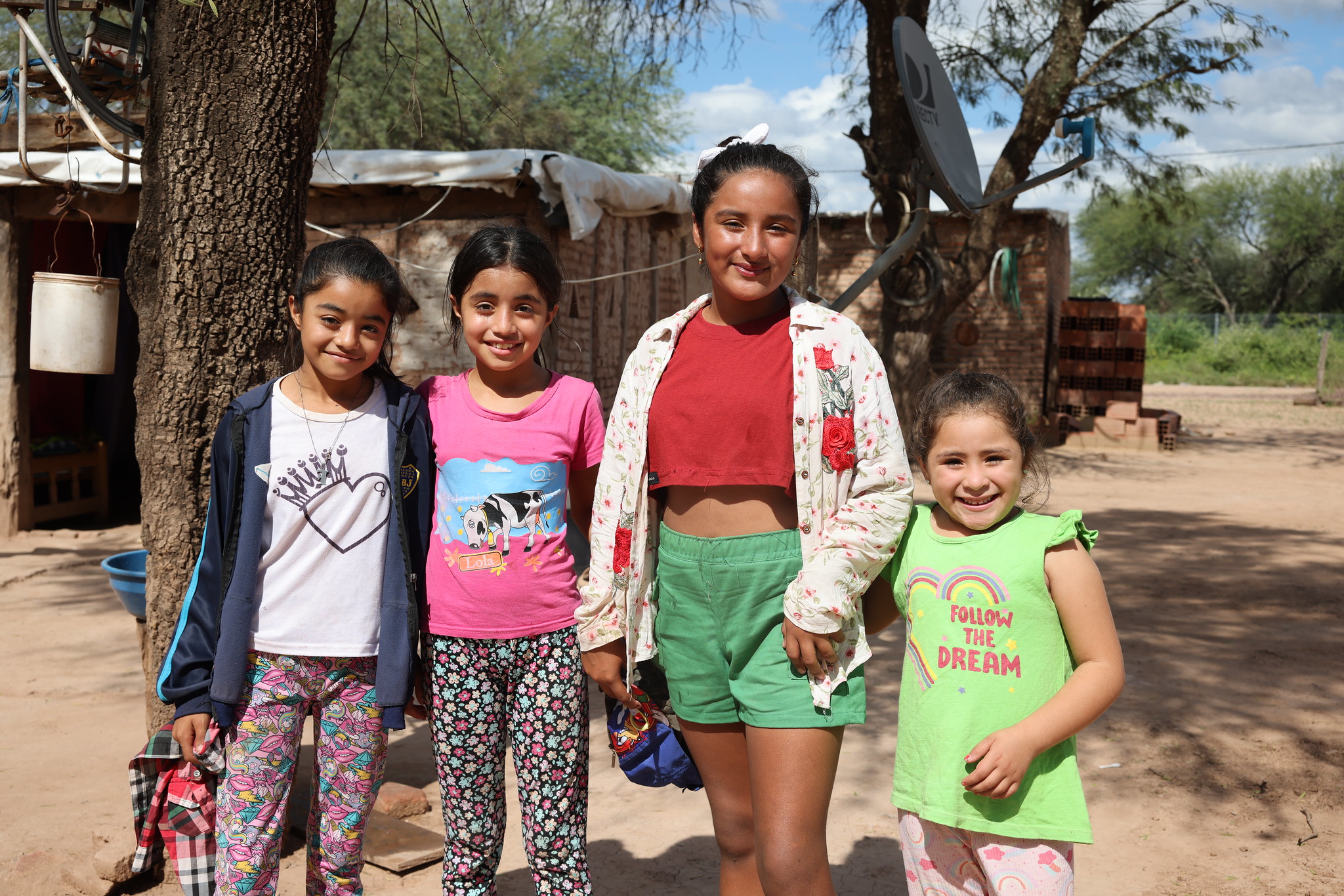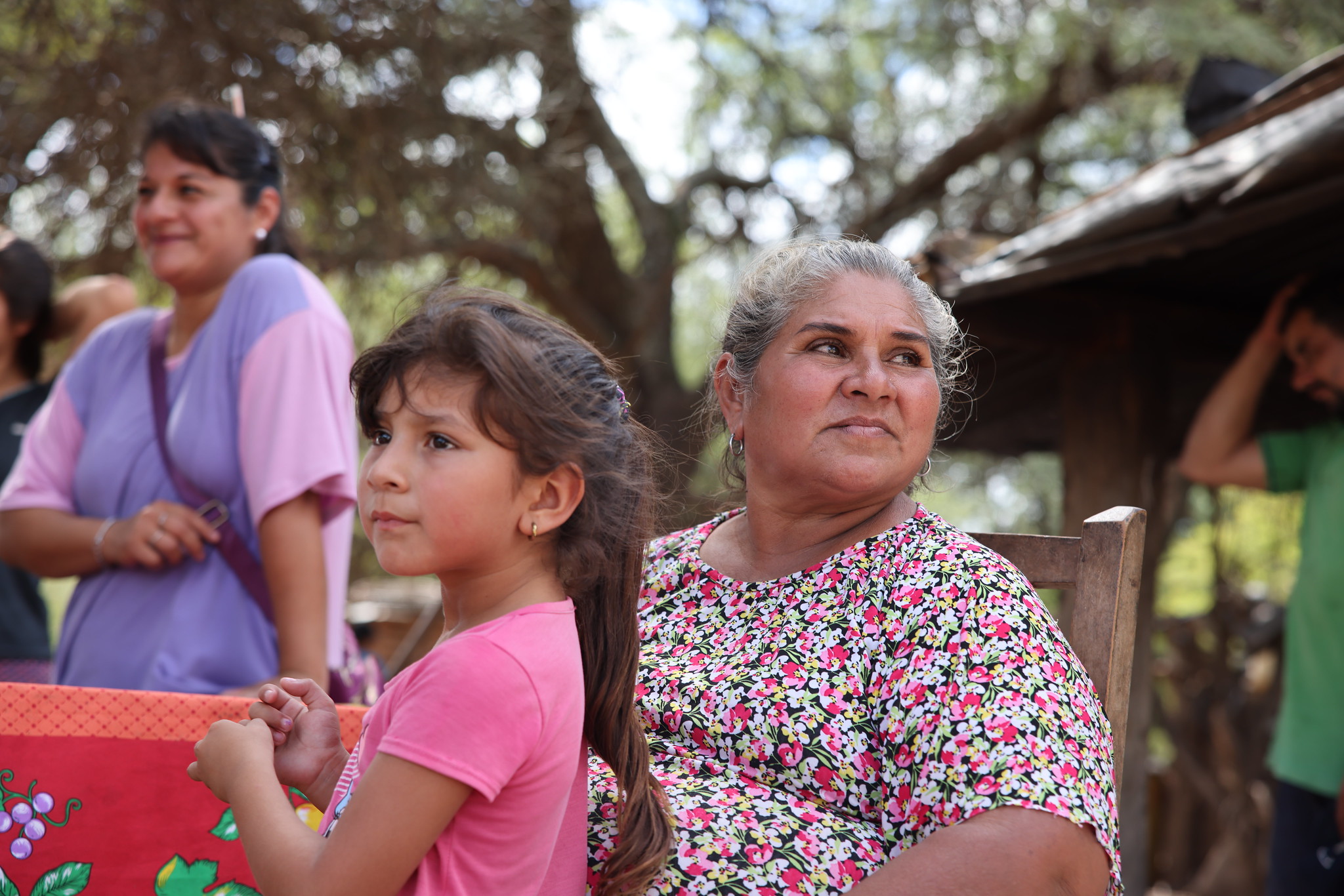
The Church in Argentina stands as a beacon of hope amidst its people’s decades-long economic and social struggles. From the bustling slums of Buenos Aires to the remote regions of Chaco, Formosa, and Santiago del Estero in the north, the Church tirelessly works to answer the call to “go and invite everyone to the banquet.”
Serving the Forgotten
Though full of life, the slums of Buenos Aires, where seven percent of the city’s population lives, are nobody’s idea of a fun place. Their inhabitants routinely experience crime and despair from the residue of what the state calls “structural poverty” which stems from decades of corruption and mismanagement.
Yet one word here makes mothers and grandmothers shudder like no other: Paco.
Paco is not “El Chapo;” he’s no crime lord recruiting young boys for his private army. Nor is he a Don Juan, the fictional libertine who seduced countless young women, ruining the lives of many.
Nevertheless, Paco has a militia of young men and women – some as young as 8 – known in the villas miseria (slums of misery) as muertos vivientes (the living dead). Considered the cheapest illegal drug available in the streets of Buenos Aires, paco is what remains from the narco-kitchens producing cocaine bound for the United States and European markets.
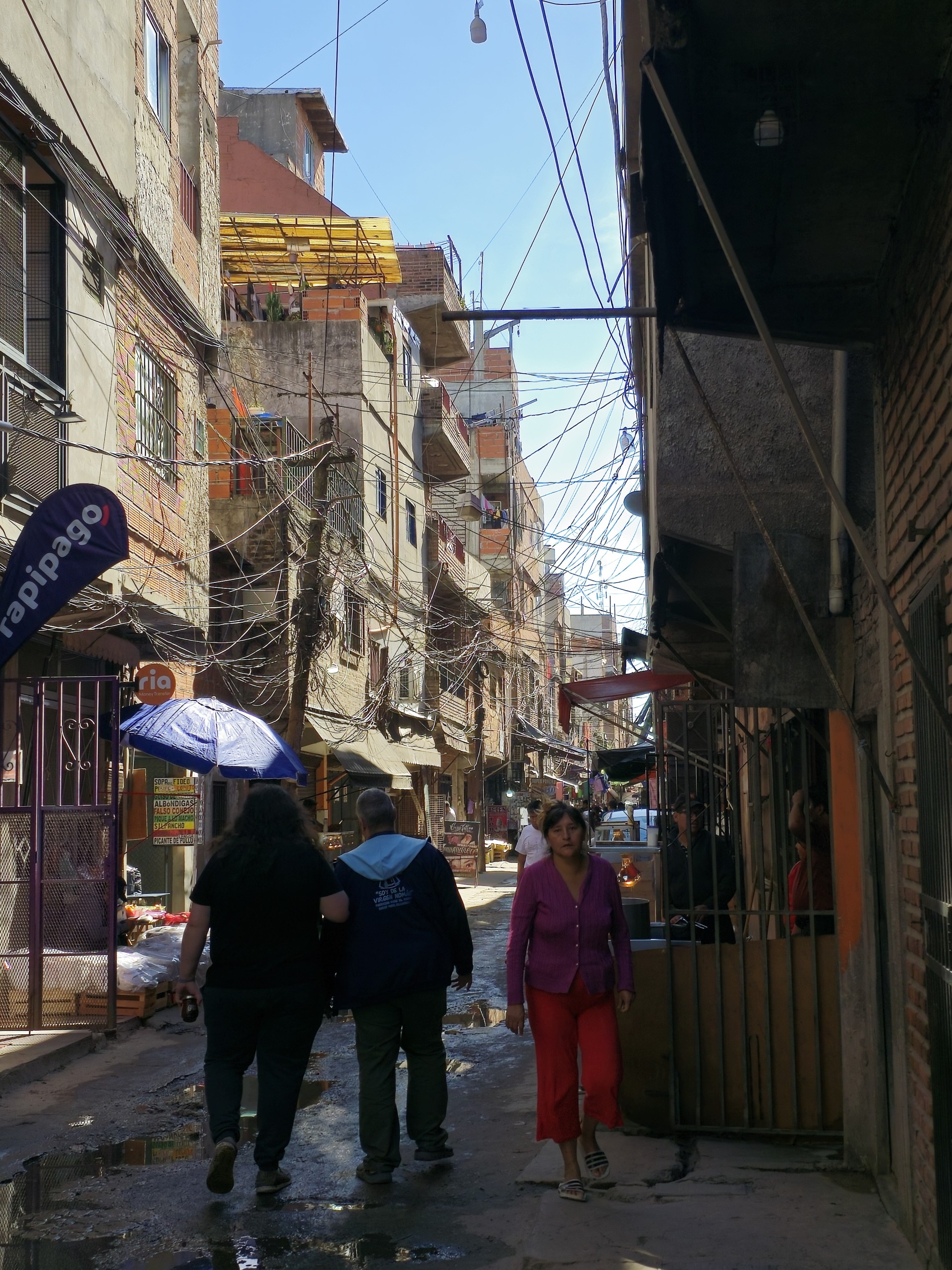
The villa miseria 31 (slums of misery) in Buenos Aires, Argentina
It’s a highly addictive mixture of raw cocaine cut with chemicals, glue, crushed glass, and rat poison. It’s sold in small transparent bags that in upper-class neighborhoods such as Recoleta or Puerto Madero are used to hold candies, and their price is not too different: with $3 you can buy two of Argentina’s famous dulce de leche-filled alfajores, or a paco fix in the slums.
In 2008, when then-Cardinal Jorge Mario Bergoglio, now known to the world as Pope Francis, tasked a parish in one of Buenos Aires’s largest slums, Villa 20-21, to open a center for rehabilitation for drug addicts, no one questioned the logic. The first Hogar de Cristo (Christ Home) opened its doors on Holy Thursday 2008, with a Mass in which the cardinal washed the feet of six young men and one young woman from the slums.
Father Carlos “Charly” Olivero, from the parish of Our Lady of Caacupé, recalls the inauguration of the first Hogar de Cristo rehabilitation center in 2008. Then-Cardinal Jorge Mario Bergoglio, now Pope Francis, washed the feet of drug addicts during a Mass, symbolizing the Church’s commitment to fighting this scourge. Father Olivero recounts, “Bergoglio told us that the fight was going to be body-to-body, that we had to commit ourselves and welcome life as it came, but that it had to be every life.”
Not far from there, in the slum known as 10-14-17 in the neighborhood Bajo Flores, with the San Lorenzo soccer stadium visible in the backdrop, the Church of Santa María Madre del Pueblo is led by Bishop Pedro Cannavó, appointed parish priest here in 2022. He shares his initial struggles: “During my first 15 days here, I was so overwhelmed that I cried myself to sleep every night.” Nevertheless, today he finds strength in the community: “My faith is a gift from the people I serve… If I go to sleep thinking about all that was left undone, I won’t sleep. But instead, I remember the blessings of the day that is coming to an end, and thank God for all that we were able to accomplish.”
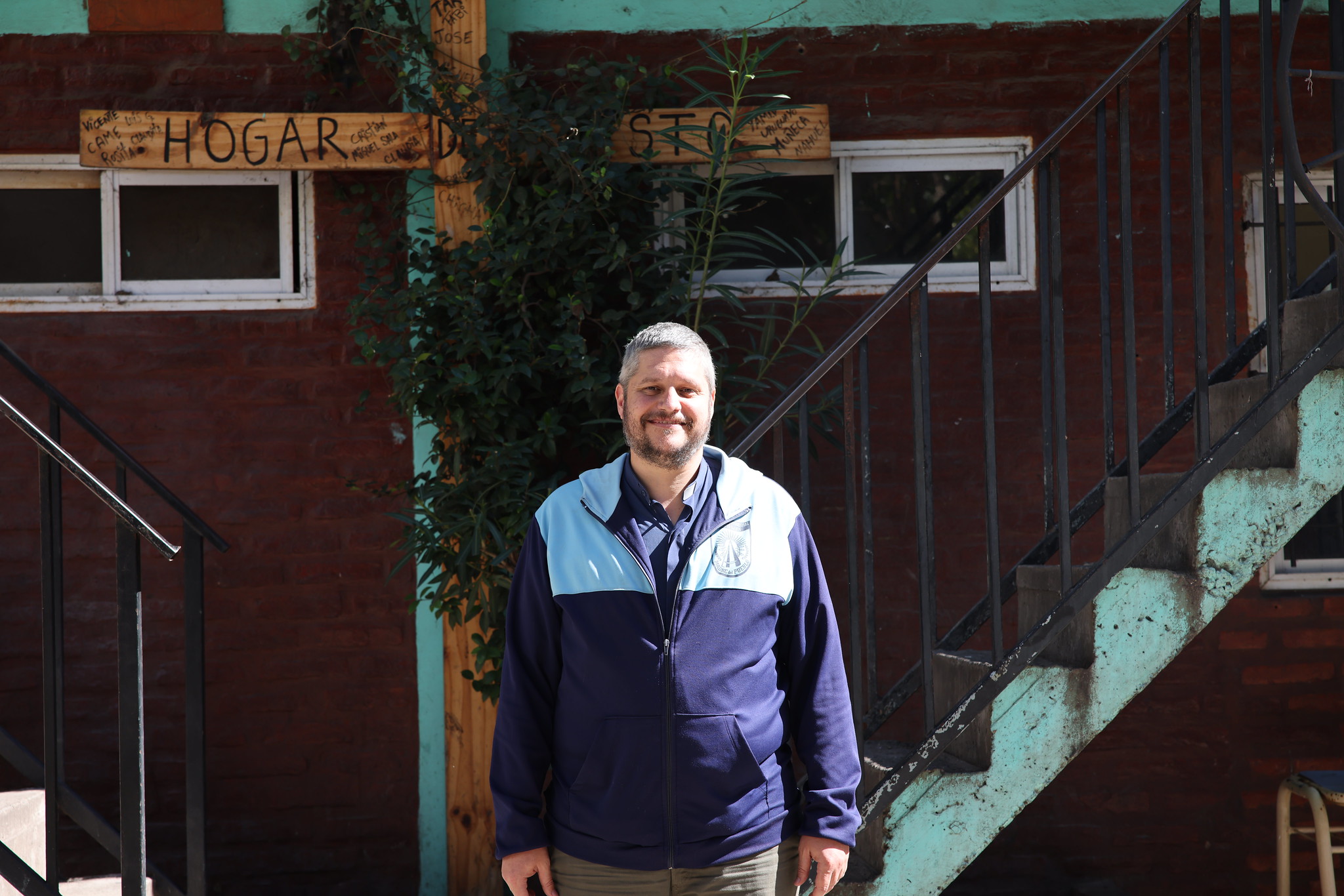
“My faith is a gift from the people I serve”, says Bishop Cannavo
The Hogar de Cristo in Bajo Flores provides crucial support to those battling addiction. “We see children as young as eight consuming paco,” Bishop Pedro explains. The parish also runs a maternal school, a kindergarten, and primary and secondary schools, serving hundreds of children and providing a safe haven from the dangers of the streets. The parish’s soup kitchens feed thousands daily, a lifeline for many struggling families.
Among the many hats Bishop Pedro wears is that of chief fireman of the neighborhood: the streets are too narrow for the firetrucks, yet the precarious conditions of the homes made with repurposed bricks, woods, and corrugated tin, with no running water nor natural gas, one stacked on top of each other and attached to each other to save on construction materials make this slum, and all others in Buenos Aires, a giant fire hazard. So much so that in their senior year the children learn how to combat fire with no truck and little to no protective gear.
There doesn’t seem to be a single person who doesn’t know who he is, and he is often stopped in the street by people asking for a blessing, a visit, or food. Here and there, he is also asked about Pope Francis and when he will visit Argentina. The pontiff hasn’t returned home since being elected in 2013, but the hopes for seeing the pontiff celebrate Mass in the San Lorenzo Stadium, serving as a backdrop for the slums, are high.
Bishop Pedro, who was ordained a priest by then-Cardinal Bergoglio and made bishop by Pope Francis in 2024, can’t confirm these rumors, nor does he deny them either. “Seeing how much he loved the stadium and seeing that it is at the heart of a neighborhood he walked too many times to count, I would say this place is a strong contender if he does come.”
“A visit by Pope Francis would be the best thing to happen to us,” he said. “If he does come, it’s here, to these neighborhoods, where he will be the most comfortable and feel the most welcome. Here, no one reduces him to politics. To everyone here, he is the best thing that’s ever happened to Argentina.”
Father Andrés Tocalini, from the Marianist congregation at the Shrine of Our Lady of Fatima, also in Bajo Flores, echoes the same dedication and challenges. Today, the parish runs the School of Fatima, which educates over 3,000 people yearly between kindergarten, primary and secondary, and trade schools, as well as a tertiary nursing school that had its groundbreaking done by then-Cardinal Jorge.
“To this day, I will never forget one of the first confessions I heard when I moved here,” Father Andrés said, visibly emotional. “It was that of a 15-year-old who admitted he prays every day not to become like his brothers because his brothers are all criminals. Can you imagine going to bed every night praying, ‘I don’t want to be like my family’?”
He also highlights the vibrant faith practiced in the slums: “Faith here in the slums is lived through what we call popular piety, and coming here is that you understand what Pope Francis means by a Church that goes out and encounters people where they are. We have many communities here, of people who come not only from various countries but diverse regions from each, with each having their Marian advocation. When I first arrived here, they would celebrate their feasts in a home, or a street, but it was mostly about eating and drinking. Now, we still have the feast, but every celebration begins with the Mass, and in most cases, they’re now doing a novena as well. I found that the more I go to encounter them, the more they then come to encounter Christ in the Eucharist.”
In the Impenetrable, Christ is the Only Source of Hope
It is often said in Argentina that even though God is everywhere, He operates in Buenos Aires. Yet, this doesn’t apply to the Church’s evangelizing efforts, which reach far beyond the capital into Argentina’s northern region, known as the Impenetrable. Here, in the northern provinces of Chaco, Formosa, and Santiago del Estero, the Church’s mission extends to remote areas where the government, locals say, hardly operates.
In Monte Quemado, Santiago del Estero, Father Juan Lanzotti, a missionary from Rosario and the diocesan director of The Pontifical Mission Societies for the Diocese of Añatuya, leads a mission grounded in the legacy of Bishop Jorge Gotteau. Known as “the missionary bishop,” Gotteau transformed the landscape of the Añatuya Diocese, not only by expanding the Church’s presence through the construction of 15 parishes and 200 chapels but by uplifting the local community with education, healthcare, and essential infrastructure. His work continues to inspire priests like Father Juan, who face similar challenges in bringing hope and the Gospel to a region as beautiful as it is harsh.
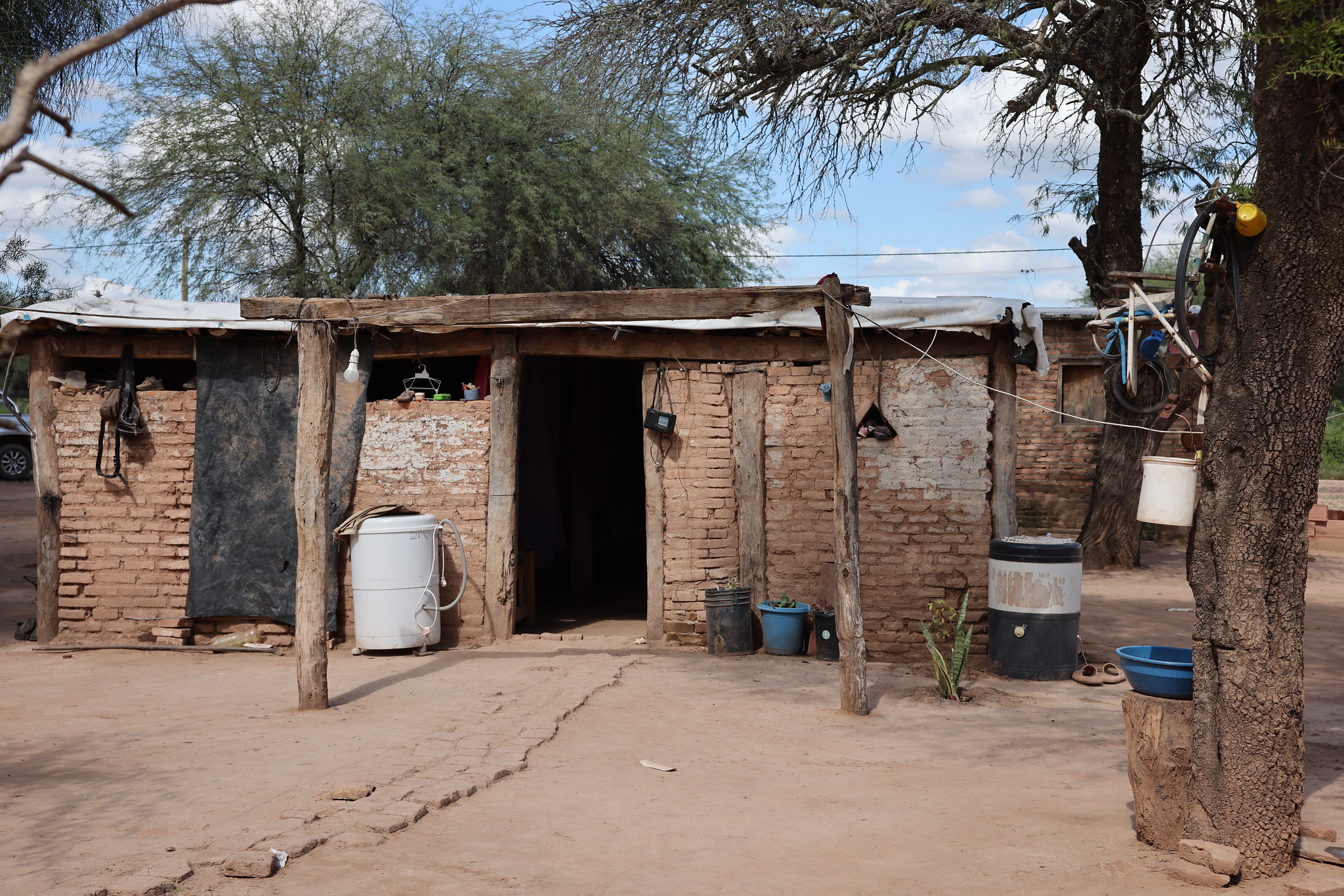
This remote area lacks infrastructure and resources, and until Bishop Jorge’s arrival in the 1960s, it also lacked a strong spiritual foundation. When he took on the role of bishop, he knew he was called to serve in one of the most impoverished and forgotten areas of the country, a place where extreme temperatures, scarce drinking water, and barren landscapes make life a constant struggle. Bishop Jorge did not shy away from these challenges; instead, he embraced them as his mission. His motto, Ad Jesum per Mariam (“To Jesus through Mary”), encapsulated his dedication to bring both material and spiritual aid to Añatuya.
Berta Cortez, a mission animator at the parish in Canal de Dios, grew up in one of the seven orphanages founded by Gotteau. Raised amidst the challenges of rural poverty, she recalls his relentless work with the government to bring running water and electricity to the region. “We owe a lot to the Church,” she said. “Yes, me personally, but also as a community. Had it not been for Monsignor Gotteau, we would still lack basic things.” Gotteau not only saw to the building of these essential services but also empowered lay leaders like Berta to continue his work, creating a legacy of resilient faith that persists today.
Father Juan further elaborated on the challenges faced by the community and the absence of the government: “There is virtually no presence from the national government in this region. The governor buys people off and uses a private helicopter, but we have no medevac services. During the COVID-19 pandemic, this lack of resources was a tragedy. People know the governor is corrupt, but they feel powerless. And they have so little that the governor can often buy them for two loaves of bread.”
The size and astonishing biodiversity of the Impenetrable make this rugged dry forest only second to the Amazon in South America. Still, the message of the Gospel has penetrated it and is full of inspiring individuals who embody the Church’s mission.
In Monte Quemado, ministers of the Eucharist like Jorge and Roberto play a crucial role in supporting the elderly and disabled. “I know that what I do is important, and I am honored to be able to do it,” said Roberto. “It is time-consuming, yes. But I cannot think of a better thing for me to do with my ‘free time.’ I still remember Monsignor Gotteau bringing the Eucharist to my mother when she was bedridden and the joy this caused in her. To know that today I get to do that for others makes the sacrifices worth it.” Inspired by Gotteau’s example, they work tirelessly, knowing that, like him, they are building more than a community – they are building the Church.
Theirs was supposed to be a three-year assignment, renewable for another three. They have brought the Feast to people’s homes for over 15 years, and Father Juan has already told them that they should plan on helping until they die or cannot physically do it anymore.
“And I’m fine with that,” said Jorge. “It’s often said that only women go to Church, but we are proof that this is not true!”
In the nearby community of Los Tigres, Hilda Catan considers herself blessed: Along with her husband, in the home where they raised 9 children and today raise two of their 17 grandchildren, they have no running water – no one in this community does – but they do have electricity. They are one of five families, among the 300 that live in this conglomerate of homes, that can say the same. “We live close to the road,” she said, with a smile that could light the world, despite its lack of teeth.
Father Juan, along with a lay missionary woman, visits this community every Tuesday. They have a WhatsApp group through which the missionary shares the Sunday Gospel with them and then they discuss what it means for them.
When we visited them, they discussed the Parable of the Lost Sheep. In the words of one of the women, it is important to remember that “yes, we’re called to be shepherds and evangelize. But we cannot forget that we are also the sheep. Sometimes, we’re one more of the flock, others we are the sheep leading the flock, and other times we are the lost sheep, the one that has to be found, and this is okay We need to remember that God does not leave us just because we might fall or sin. He chooses to be by our side, even when we get lost, and if he gave his life because he loved us, how could he not forgive our sins?”
Padre Federico Aquino, the diocesan director in Formosa, is working hard to find financial support for the Parish Father Jose Gabriel Brochero, named after Argentina’s most recent saint, a priest who traveled the country on top of a mule he called Malacara (roughly translated to long face), opening mission stations, churches, and schools.
The parish, which is currently little more than a small shed, is being built out of the sheer willpower of a group of women who live in the newest neighborhood of Formosa, on the outskirts of the city and miles away from the nearest parish. After moving to the neighborhood, they secured a plot of land, built the shed with a cross atop the roof, and, in months, found themselves overcome by the number of people coming to pray. It’s been three years since they opened the chapel, and they now have a full-time priest, have acquired the neighboring plot of land, and are planning on building a church for around 300 people. These plans, however, are already too small. Despite the lack of shade to protect people from the 95-degree heat, some 700 people attend each of the three Masses on Sundays according to the local priest.
This growth is partially attributed to the fact that since 2021, World Mission Sunday – to be marked October 19 this year – has had its principal celebration here, and not in the Cathedral: “We gather here to pray, share, and then go visit each of the homes and the families in this neighborhood. It is an enriching experience to go and encounter the people bringing the Gospel to those open to receiving it. It has also been an experience to strengthen our faith as missionaries, and of convincing ourselves that the only path to live our faith is the mission.”
The Church in Argentina faces significant challenges, from financial hardships to social issues. However, its unwavering commitment to its mission – sharing the Gospel with all – continues to bring hope and support to those in need. As we reflect on the powerful stories and tireless efforts of the Church and its missionaries, we are reminded of our call to support and pray for these vital missions. Together, we can help ensure that the invitation to the banquet is extended to everyone, especially those most in need.
